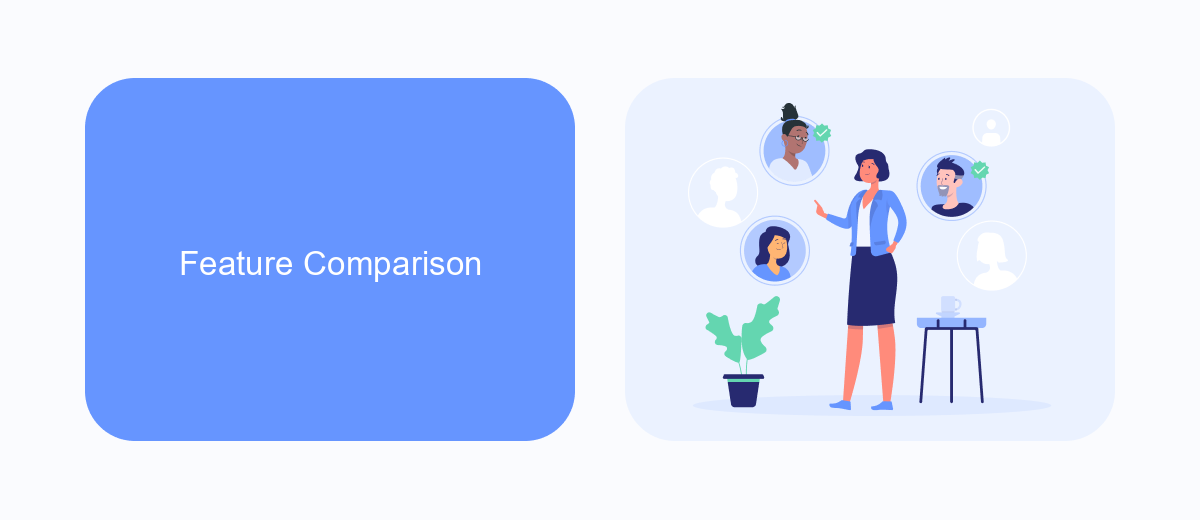In today's data-driven world, businesses are increasingly reliant on robust tools to manage and analyze their data. Power BI and MuleSoft are two prominent platforms that offer unique capabilities in data integration and visualization. This article delves into a comparative analysis of Power BI and MuleSoft, exploring their features, strengths, and how they can be leveraged to optimize business operations.
Introduction
In the digital age, businesses are increasingly reliant on data to drive decision-making and streamline operations. Two popular tools that facilitate these processes are Power BI and MuleSoft. While Power BI is a business analytics service that provides interactive visualizations and business intelligence capabilities, MuleSoft is a comprehensive integration platform for connecting applications, data, and devices.
- Power BI: Specializes in data visualization and business analytics.
- MuleSoft: Focuses on API-led connectivity and integration.
- SaveMyLeads: Automates the process of integrating various applications and services.
Understanding the strengths and use cases of each tool can help businesses choose the right solution for their needs. Power BI is ideal for organizations looking to gain insights through data visualization, whereas MuleSoft excels in creating seamless integrations across diverse systems. Additionally, services like SaveMyLeads can further simplify the integration process, making it easier for businesses to connect their data and applications efficiently.
Feature Comparison

When comparing Power BI and MuleSoft, it's important to note their distinct functionalities. Power BI is a business analytics tool primarily used for data visualization and business intelligence. It allows users to create interactive reports and dashboards, providing deep insights into business data. MuleSoft, on the other hand, is an integration platform that enables businesses to connect various applications, data, and devices. It focuses on creating seamless data flows between disparate systems, ensuring efficient data integration and management.
Power BI excels in its user-friendly interface and robust data visualization capabilities, making it ideal for business analysts and decision-makers. MuleSoft, with its Anypoint Platform, offers extensive integration solutions, supporting API management and real-time data synchronization. For businesses looking to streamline their integration processes, services like SaveMyLeads can be particularly useful. SaveMyLeads automates the integration of various applications, reducing manual efforts and ensuring data consistency across platforms. Both tools serve different but complementary purposes, making them valuable assets depending on specific business needs.
Integration Capabilities

When it comes to integration capabilities, both Power BI and MuleSoft offer robust solutions tailored to different needs. Power BI focuses on seamless data integration from various sources to provide comprehensive business intelligence and analytics.
- Power BI integrates with a multitude of data sources, including SQL databases, Excel files, and cloud-based services like Azure and Google Analytics.
- MuleSoft, on the other hand, is designed for more complex integration scenarios, offering tools for API management, data transformation, and connectivity across diverse systems.
- SaveMyLeads can be utilized alongside these platforms to streamline lead management and automate data flows between your CRM and other marketing tools.
In summary, while Power BI excels in data visualization and analytics through its extensive integration options, MuleSoft provides a more comprehensive solution for enterprise-level integrations involving multiple systems and APIs. SaveMyLeads further enhances these capabilities by automating lead integration processes, ensuring that your data is always up-to-date and actionable.
Pricing and Licensing

When comparing Power BI and MuleSoft, it's essential to consider their pricing and licensing models. Power BI offers a flexible pricing structure that caters to different business needs. Users can choose between the free version, Power BI Pro, and Power BI Premium, each with its own set of features and capabilities.
On the other hand, MuleSoft operates on a subscription-based model, tailored to enterprises requiring robust integration solutions. MuleSoft's pricing is typically based on the number of connections and data volume, making it suitable for large-scale operations.
- Power BI Free: Basic features with limited data capacity.
- Power BI Pro: .99/user/month, offering advanced analytics and collaboration.
- Power BI Premium: Starting at /user/month, designed for large-scale deployments.
- MuleSoft: Custom pricing based on specific integration needs and data volume.
For businesses seeking seamless integration solutions, services like SaveMyLeads can be beneficial. SaveMyLeads automates data transfer between various platforms, complementing the capabilities of both Power BI and MuleSoft by simplifying integration processes.
Applications and Use Cases
Power BI is a powerful business analytics tool that allows users to visualize data and share insights across their organization. It is widely used for creating interactive reports and dashboards, making data-driven decisions, and performing advanced analytics. Companies leverage Power BI to monitor business performance, track key performance indicators (KPIs), and gain insights into customer behavior, sales trends, and operational efficiency. Its integration with various data sources enables seamless data aggregation and comprehensive analysis.
MuleSoft, on the other hand, specializes in connecting applications, data, and devices with its Anypoint Platform. It is widely used for building application networks, enabling seamless data integration, and ensuring efficient API management. Organizations use MuleSoft to streamline workflows, improve connectivity between disparate systems, and enhance operational agility. For businesses looking to automate their data integration processes, services like SaveMyLeads can complement MuleSoft by providing pre-built integrations and simplifying the connection of various platforms, further enhancing the efficiency and effectiveness of their integration strategies.
- Automate the work with leads from the Facebook advertising account
- Empower with integrations and instant transfer of leads
- Don't spend money on developers or integrators
- Save time by automating routine tasks
FAQ
What are the primary differences between Power BI and MuleSoft?
Can Power BI and MuleSoft be used together?
Which tool is more suitable for real-time data analysis?
Is coding knowledge required to use Power BI and MuleSoft?
What services are available for implementing automation and integration setups with these tools?
If you use Facebook Lead Ads, then you should know what it means to regularly download CSV files and transfer data to various support services. How many times a day do you check for new leads in your ad account? How often do you transfer data to a CRM system, task manager, email service or Google Sheets? Try using the SaveMyLeads online connector. This is a no-code tool with which anyone can set up integrations for Facebook. Spend just a few minutes and you will receive real-time notifications in the messenger about new leads. Another 5-10 minutes of work in SML, and the data from the FB advertising account will be automatically transferred to the CRM system or Email service. The SaveMyLeads system will do the routine work for you, and you will surely like it.

